Click here to read More Attention Deficient Disorder
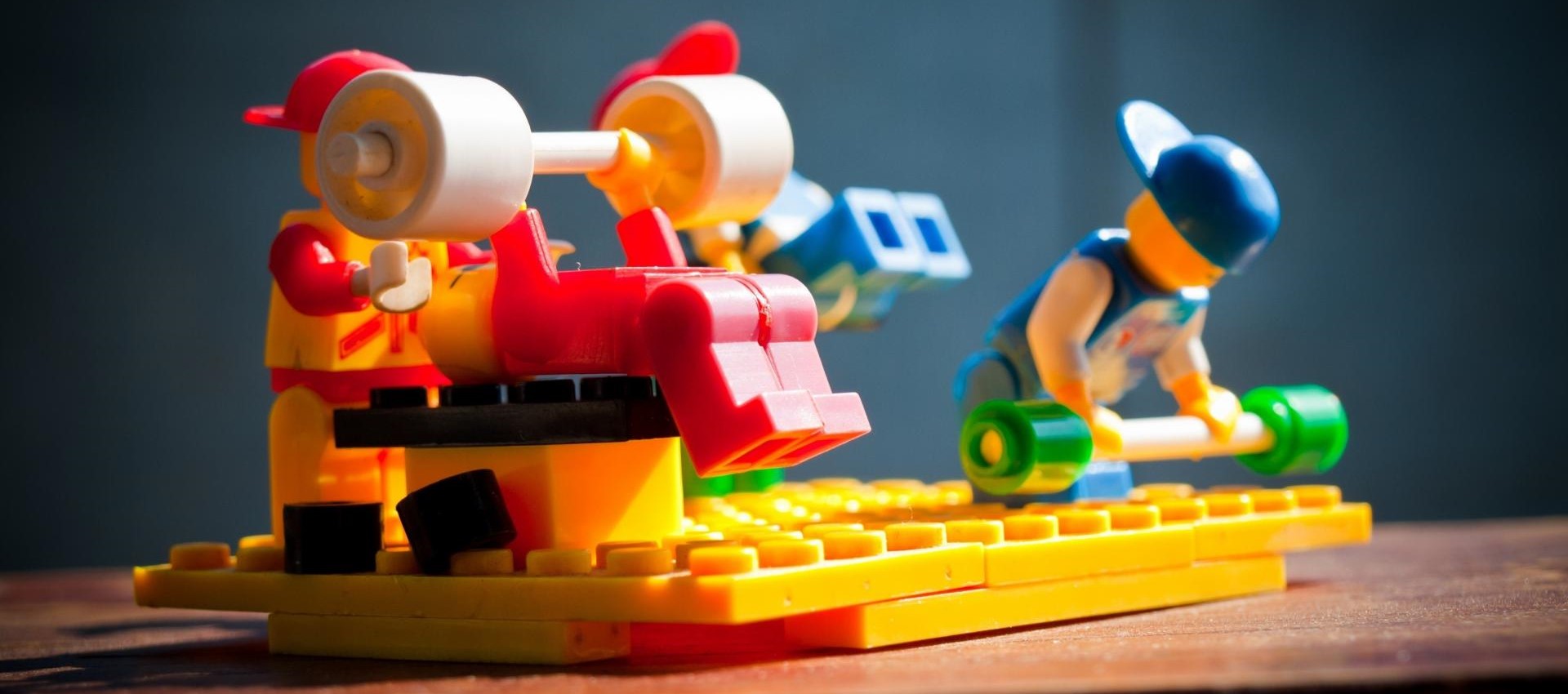
Let’s get you comfortable using the bench press, starting today!
We specialize in helping people pick up barbells for the first time. Today, we’ll share with you the same lessons we teach our clients!
How Important is the Bench Press?

For the last 30-40 years, the bench press has become the universal lift for bros everywhere to determine how strong someone truly is.
The questions are things like:
- How much do you bench?
- Do you even lift?

As popular as it is, the bench press in its current form is really less than 100 years old.
Until the 1930’s, people did a movement called the “floor press”, which was similar to a bench press only done from the floor.
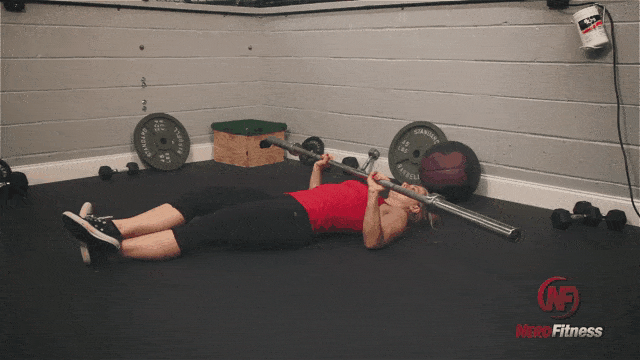
In fact, at first many people did a movement called a “belly toss” – where the bar would come down and bounce off the belly to help the lifter get it back up.
The three movements – bench press, belly toss, and floor press were all popular until the 40’s and 50’s, when the bench press started to become more and more popular, as bodybuilders liked how the bench worked their pecs (better than the other two movements).

As the bench press became more and more popular, powerlifting emerged in the 1970’s and separated itself from weightlifting as a sport of its own.
What Muscles Does the Bench Press Utilize?
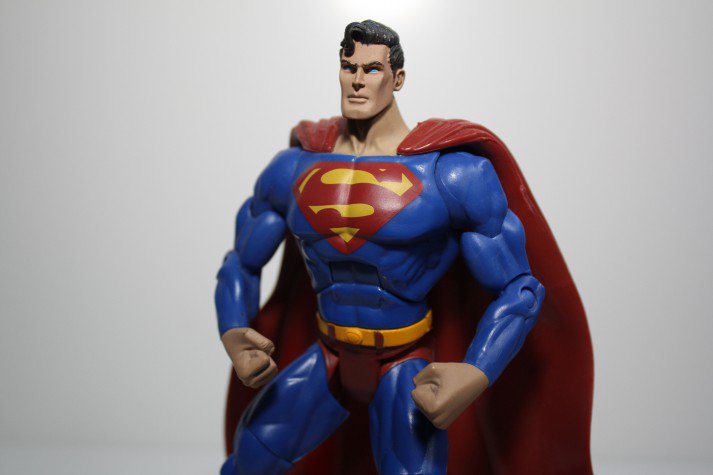
The bench press is a great movement to have as a part of your strength program, and one move we consider to be a part of the “big 4” basic lifts.
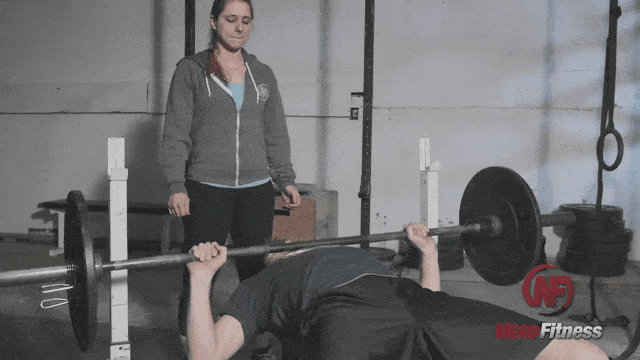
The other three lifts?
Some of the issues coaches have with the bench press (such as a tight chest creating bad posture) don’t come from benching itself, but come from bench being one of the ONLY movements in your program, and can disappear when incorporated as a part of a well-rounded strength program.
In other words, don’t JUST train using the bench press.

The bench press is widely known as a “chest” exercise, however, that’s definitely not all it is. The bench strengthens your:
- Shoulders
- Triceps
- Forearms
- Lats
- Pecs
- Traps
- Rhomboids
- Plus pretty much every muscle in your upper body
However, the bench press doesn’t JUST use your upper body.
When you bench properly, you use your lower back, hips, and legs as well. Just like our other main lifts (the squat, deadlift, and overhead press), the bench press, while putting an emphasis on specific muscle groups, is a full body movement.
Think about it – while you’re benching, the rest of your body is not just lying there doing nothing.
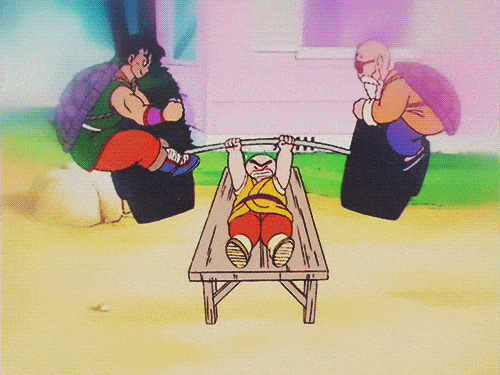
Your entire body should be working – your shoulders are pinched together and your lats are engaged, while your back, hips and legs are tight, stabilizing your entire body to create a solid base and help you generate drive from the round.
How to bench press: The Setup
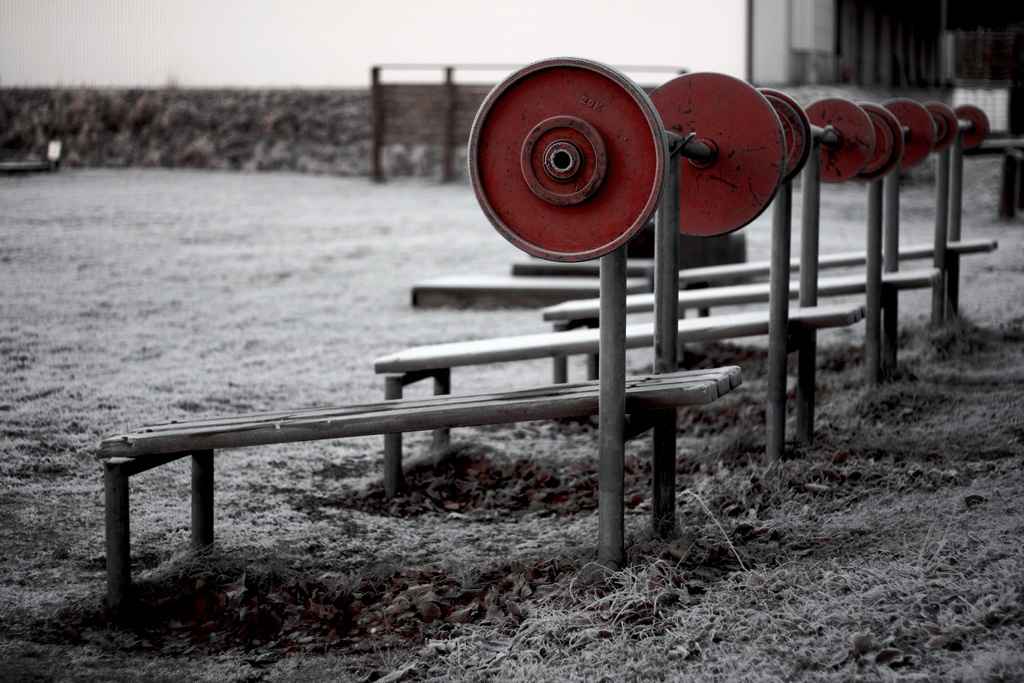
There are a lot of different ways to perform the bench press.
We’ll start you out with a standard and basic bench press variation, which we believe is the best (and safest) method for general strength.
Remember: just because you see someone benching a ridiculous amount of weight at the gym does not mean they are using proper or safe form.
They could be an advanced athlete who is making compromises to their form (knowingly or unknowingly) in order to bench higher numbers.

What do you need to perform the bench press?
- A weight bench with uprights:
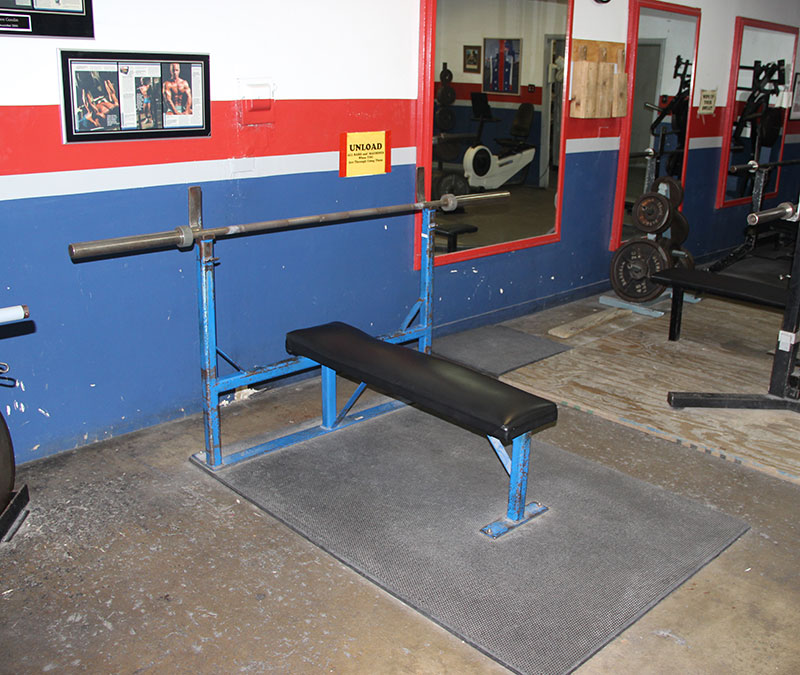
- Barbell – the standard weight is 45 lbs, but this may be too heavy to start. No matter how strong you are, I recommend starting with a PVC pipe or broomstick to learn proper form.
- Spotter – once the weight gets heavy (we will discuss options later in case you just don’t have someone else to spot you)
- If you like to learn via video, please watch “How to Bench Press Safely” from Jim Bathurst, our lead coach from the Nerd Fitness Coaching Program:
There are many different ways to set up for a bench press – as you’ll see by watching any powerlifting competition, or even by spending just 20 minutes in your local gym.
Some people get on the bench and curl themselves under the bar, some enter the bench from the back and slide in under the bar, and others just lie down and then get tight.
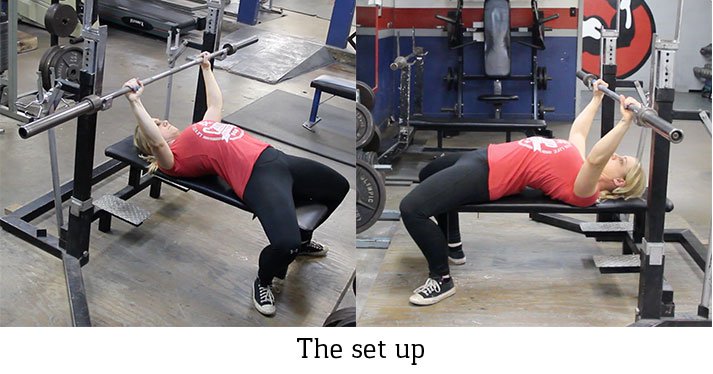
The key here is to set up in a way that helps you get your body tight and ready for the lift.
Before you begin, it might be a good idea to roll the bar forward on the uprights, as this is where you will be lifting it off from.
Having the bar in the same spot in the uprights will help you with a standard set up that is the same every time.
Here’s how to position yourself during the bench press:
- Squeeze your shoulder blades together (as if you were trying to hold a pencil between them), press your lats into the bench, and raise your chest up slightly towards the bar.
- While you’re doing this, squeeze your butt and plant your feet into the ground. Your entire foot (heels included) should be on the ground, on either side of the bench.
- Keep your entire body tight. The raising of your chest to the bar, squeezing your shoulders together, squeezing your butt, and driving your heels into the ground will create a tight arch in your back. (more on this later).
- Imagine you are a superhero and pretend you are sucking all the energy out of the room and absorbing it. As you the bar descends, absorb that energy and get ready to explode upward with the bar.
- Your shins should be perpendicular to the ground and directly below your knees. If they are out in front of you, your feet are too far forward and you won’t be able to generate proper drive.
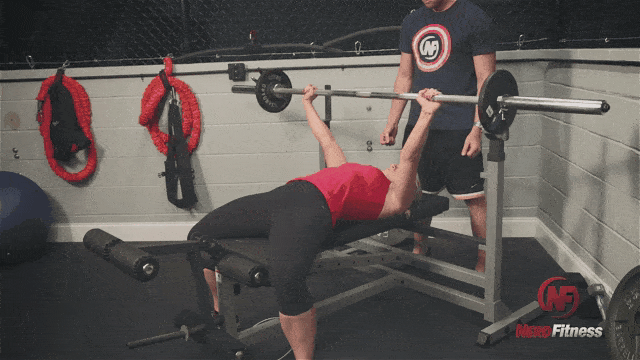
When you look up, your eyes should be just north of the bottom of the bar – you should see the bar directly above your eyes. Your head, upper back, and butt should never leave the bench.
Note: Some people (including myself) find it easier to get tight in their upper back if they put their feet up on the bench, grab the bar, get tight in their upper back, and then place their feet on either side of the bench one at a time.
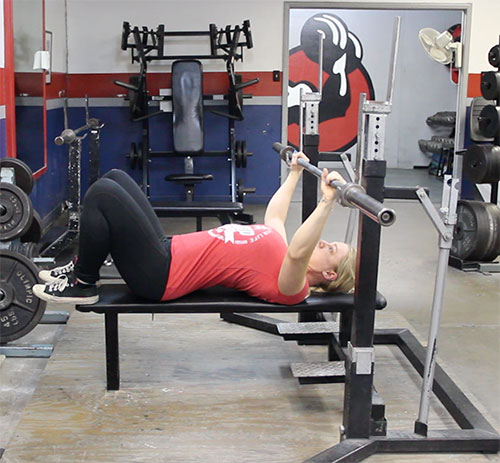
This is just another method and something you can try out after you get the hang of the bench!
Next, take your arms and put them straight up, and grab the bar. Your grip should be with your thumbs around the bar.

A thumbless grip is not to be used on the bench press, as it is unsafe, and often nicknamed the “suicide grip,” as it is far too easy for the bar to fall off of your hands and land on your body (warning: hard to watch).
When you hold the bar, it should be in the heel of the palm (the same spot in your hands as for the overhead press.) Your wrists will not be extended, and your forearms are under your wrists, forming a solid line of support.
If you hold the bar in the upper half of your hand or the fingertips, not only are you not in a strong position, but you could hurt your wrists.
Bench Press Grip
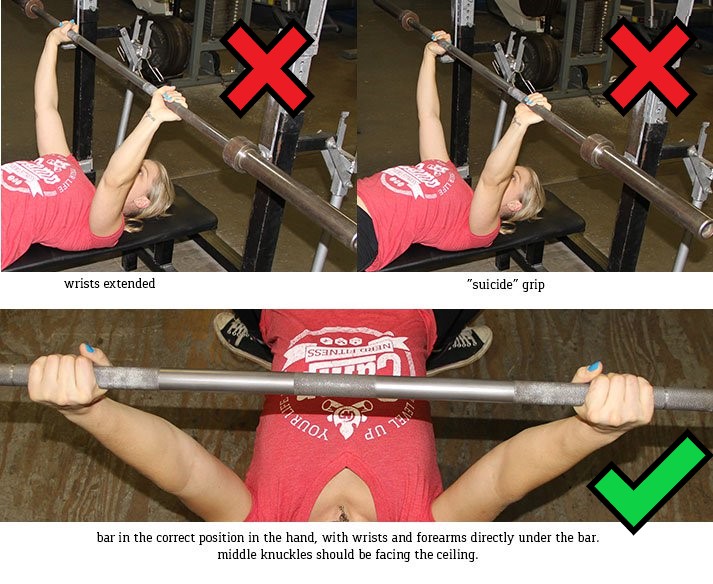
Bring the bar (or, preferably PVC as we are just learning) down to your chest. At your chest, the width of your grip should make your forearms straight up and down (as perpendicular to the floor as you can).
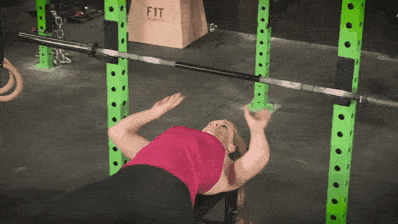
Get a friend to help you (as you won’t be able to see on your own), or tape yourself so you can see. Don’t stress too much about getting your forearms 100% perfectly vertical.
Once you get comfortable with the movement, you may change the width of your grip, as there is wiggle room for personal preference, but this is a great place to start.
Also, keep in mind that your grip may seem way wider or narrower than your friends based on the width of your shoulders. This is normal!
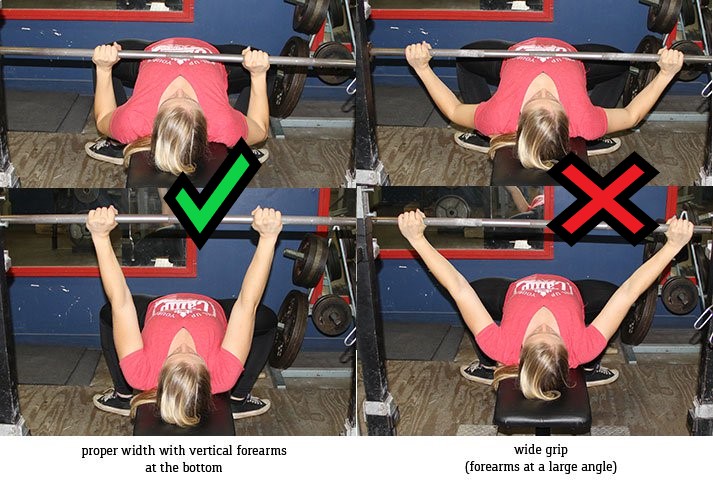
Why would people alter their bench press grip?
- A wider grip is more pec-focused
- A narrower grip is more tricep focused
You will see powerlifters use a super wide grip because it reduces the range of motion and therefore allows them to lift more weight in competition.
However, more weight does not always mean stronger, and our goal today is safety and strength!
Which is why we recommend a grip with your forearms in a vertical position, it’s the most well-rounded and safest version for overall strength.
If you’re worried about whether you have the right grip in place, record yourself and match it against the videos in this guide. If it’s close, you’re doing great.
Want an expert to offer feedback? Through our snazzy app a NF Coach (like myself!) can review your form, so you can hone your bench press technique and train safely.
Comments
Post a Comment